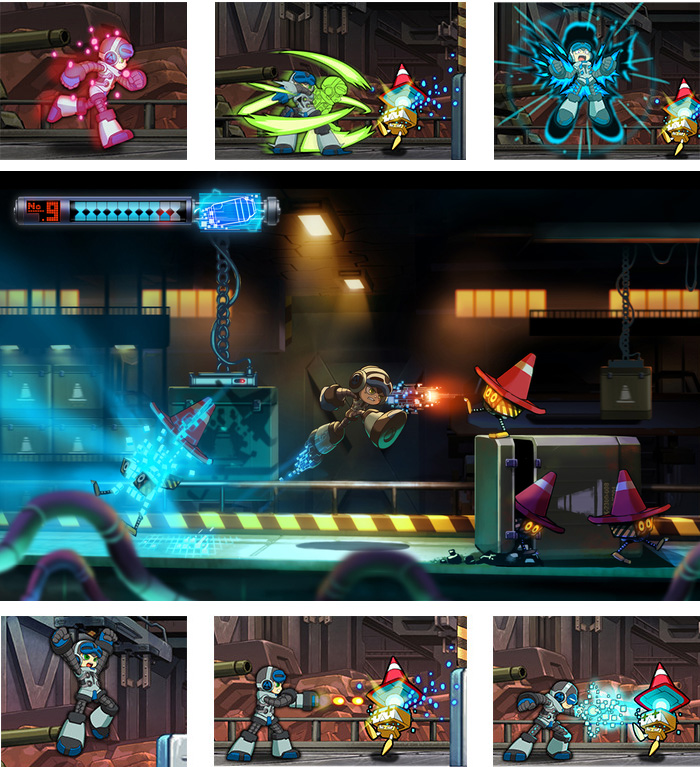I hope that the goal they have after the orchestral score at 4million is just labeled "we'll make the game better", feature creep is a dangerous thing.
See, this is the single most dangerous possible stretch goal. The idea that extra budget should translate into some arbitrary, abstract way of making the game "better" can lead to lily-gilding additions that wind up running over on cost without really adding much to the actual quality of the game -- while simultaneously being completely impossible to measure (how can you say how many percent "better" the game is at $4.2m vs $4m?)
To a certain degree, you have to look at game budget in terms of parallelism. There's some basic level of improvement you can make just by fully staffing positions -- going from trying to cobble something together with one coder and one artist to having a full 7-8 person team, and giving them two years instead of a year. Above and beyond that, though, you can't really spend money directly. You can't take a core engineering team of 4 people and bring it up to 8 and expect the project to go twice as fast or get twice as much done -- the cost of coordination, and of training more people on more components of the codebase, rapidly eats up your gains.
As a result, if you want to spend more money efficiently, you have to find ways to spend it in parallel. Adding VA to a game is great because you can pay a completely different set of people to go cast, record, and edit the voice acting without impacting the primary team at all. If you've got a relatively flexible core game engine, things like extra modes can fall into this too -- the team on the Classic Mode can probably avoid having to interact too much with the team on the primary campaign.
Even so, though, at some point you run out of stuff to easily do in parallel, and you're stuck either spending longer fiddling around on your design (bad), or just banking the extra as a rainy-day fund in case something goes wrong during development, but just keeping it if everything goes well (good.)
In the particular case of Bloodstained, the campaign is going to end somewhere on the order of $4m. We also know that the game has a publisher who pledged a significant amount upfront if the campaign proved successful. Let's say that's another $4m. When you break that down, if you don't spend it on anything else, it's sufficient budget to pay around 45 staff for two years. In comparison, Symphony of the Night has, by my count, credits for 16 full-time employees on the project. That's a huge difference. A big chunk of that budget difference is going to wind up spent on things like orchestrated music and added modes, but even so, they're not going to use that whole budget efficiently on just polishing the core campaign. Something like an external port starts to make a lot of sense when it can be run entirely in parallel.
(And all these budget numbers assume that the publisher didn't just provide extra contingent funding for hitting the port goals the way they did for the original campaign, when I think it is extremely likely that they did.)
What I can definitely say for sure is that it's very reasonable to believe something will change in scope as a result of these system inclusions.
What's the mechanism for this? Who precisely is making decisions that cause the game to be limited as a result? At what point is a feature or boss or neat effect being added where someone says "oh, shit, I bet this won't work on the Vita" and cuts it, even though the primary team isn't even working on the Vita version?
I feel like no one in this thread has ever played games with outsourced downports before. Look at last gen's Call of Duty games and their ports to the Wii. Were the main games getting restricted or downgraded to support those? No, because a completely different team was given the games and told to figure out how to port it, and they basically had to figure out how close to the bone they could chop and still get a playable product at the end. This is so obviously the most likely result here (that the port team gets a game to work with and have to cut it down severely to work, producing an overall crummy port) that it's bizarre to imagine this process of pre-emptive downgrading people are imagining.
If the project calls for a 2018 release for whatever reason, it's pretty assured they will sooner compromise the project's design than stick to a delayed release beyond 2017.
It is? Who's assuring it? Shipping an unfinished game in order to meet some cutoff date for a stretch goal platform would be absurdly foolish. This is the kind of thing people invent from whole cloth to work themselves up, not the reality of the situation.
(Also, I don't think there's a single major Kickstarter title that released on schedule with their original estimate. This game
will ship later than scheduled.)
It's an unknown factor if the Publisher is still going to provide 5 Million. For all we know Bloodstained gets to 3.5 Million, and the Publisher gives them 1.5 to cover the difference to make it an even 5 Million.
There is zero chance that this is the situation.








